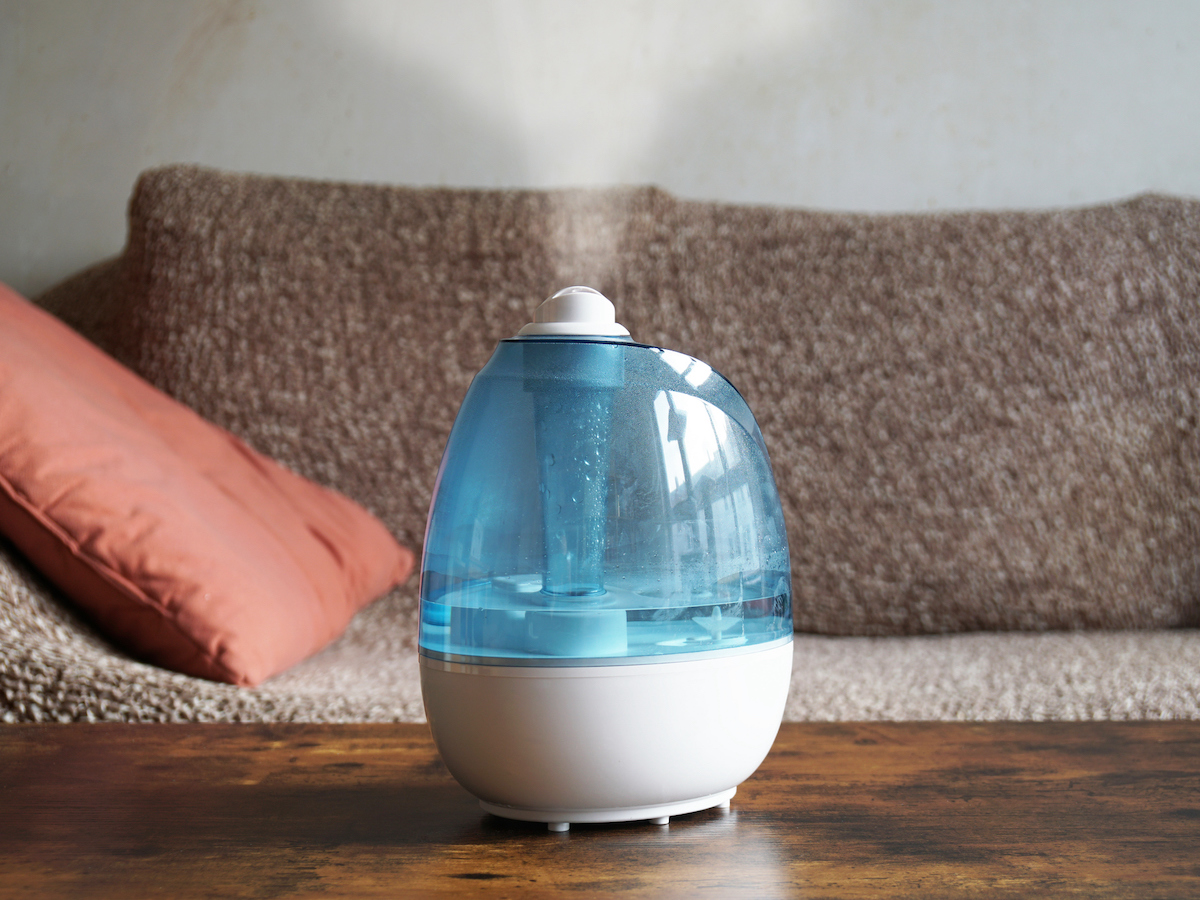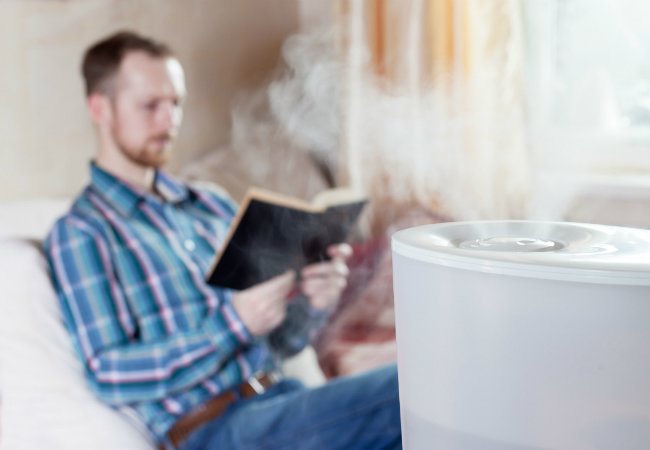We may earn revenue from the products available on this page and participate in affiliate programs. Learn More ›
A hardworking room humidifier is a lifesaver during the dry, cold months of winter. Its dedicated function—adding moisture back into the air in your home—can soothe dry skin, improve the symptoms of colds and other respiratory conditions, and maintain a level of indoor comfort despite the changing of the seasons.
RELATED: 5 Signs Your Home Needs a Dehumidifier—and How to Select the Right One
If not regularly cleaned, however, a humidifier can spew more than just moisture. The standing water provides a prime breeding ground for mildew and bacteria, which can then, in turn, be dispensed into the air with each puff from the machine, potentially making your allergies worse. Fortunately, caring for this useful appliance is not complicated: Spare yourself a headache by emptying out, cleaning, and sanitizing your humidifier once a week.
While the routine differs slightly from model to model, you can follow this guide on how to clean a humidifier for a solid starting point. Before you get going in earnest, however, be sure to consult the owner’s manual for your unit’s specific cleaning needs and warnings.
Tools & Materials
Bobvila.com may earn a commission from purchases made through these links.
STEP 1: Remove and rinse the filter.
Unplug your humidifier and remove the tank. Pull out the filter first, and rinse it with cool, clean water—and only water. Cleaning solutions can potentially damage a humidifier’s filter.
STEP 2: Disassemble the rest of your appliance.
While you’re at it, take out any additional parts that can be disassembled (refer to your manual) so you can wash them separately.
STEP 3: Rinse or soak all of the pieces of your humidifier in undiluted vinegar.
Fill the base with white vinegar, and swish it around so that it runs over all sides. This all-natural all-star has many powers, including softening mineral deposits, killing mold, and preventing future growth.
Next, fill a small tub or bucket with undiluted vinegar, and drop in any parts you’ve removed from the base to let them soak. Allow the vinegar to work for about half an hour.

STEP 4: Scrub the humidifier’s parts with a soft-bristle brush.
Work gently and thoroughly brush the wet base, getting into all the corners and removing any scale and/or mineral deposits that have formed. (You might find that your humidifier came with a special brush for cleaning; if not, you can use a bottle brush or old toothbrush.) Don’t forget to do the same with the pieces that you soaked in your tub of vinegar.
Rinse everything thoroughly with cool, clean water, and set aside on a towel to dry.
STEP 5: Soak the tank in a diluted vinegar or bleach.
Next up: Your humidifier’s tank. Pour any excess water out of the tank and refill it with clean water. Add a teaspoon of bleach (or vinegar, if you prefer) for every gallon of water, and allow the solution to sit in the tank for half an hour. Drain the tank and rinse very, very thoroughly with cool, clean water.
STEP 6: Assemble your clean humidifier and follow these tips to minimize future mold and mildew.
Put your humidifier back together, fill the tank with clean water, and plug it back in. Going forward, follow these tips to keep maintenance easy:
- Use distilled water in your humidifier, and you’ll probably see less buildup of mineral deposits at your weekly cleanings.
- Empty out and refill your humidifier with clean water daily.
- Keep the household humidity level should remain between 30 and 50 percent. Anything higher will cause stuffiness and condensation, inviting the growth of mold and mildew; anything less, and you might start to experience the dry nosebleeds and cracking skin so many suffer from in winter.
Set at the right levels and regularly maintained, a clean humidifier makes for a happy—and healthy—home all winter long.

